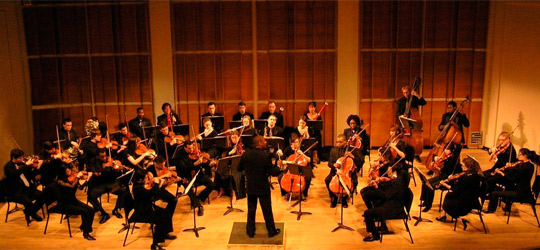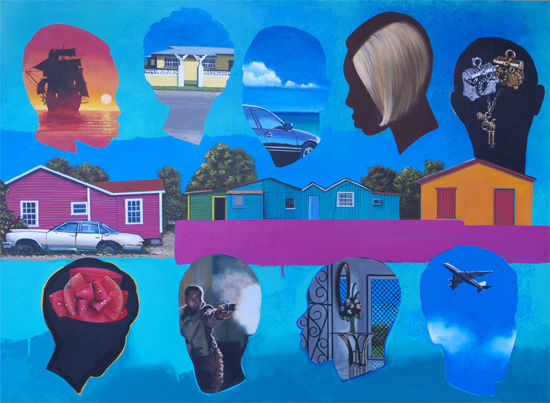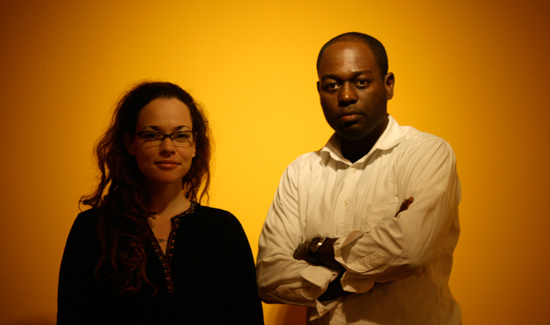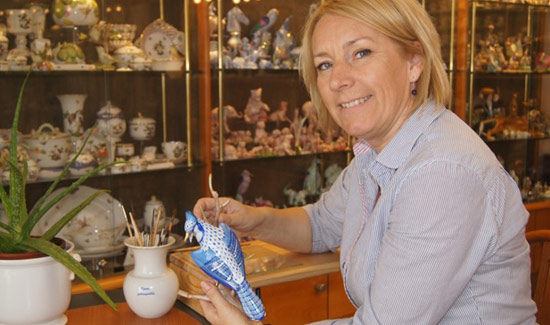
At the invitation and under the patronage of our distinguished Governor-General Sir Arthur Foulkes and the always elegant and charming Joan Lady Foulkes, the Nassau Music Society’s Thursday night concert at Government House featured members of the internationally-acclaimed Ensemble du Monde under the direction of Marlon Daniel. We were privileged to hear two subsets of the ensemble: first and foremost, the ladies-only Quatuor Mahogany string quartet, later joined by four gentlemen to make a mixed-couples octet. All of the evening’s musicians have sterling credentials including doctorates earned at the top North American and European conservatories, including the Academy of Music Hanns Eisler of Berlin, McGill University, the Manhattan School of Music, the New England Conservatory, the Eastman School of Music, Indiana University, Northwestern University Bienen School of Music, UCLA, the University of Kansas, and Juilliard, an incubator of talented individuals not only in music but also in drama and dance.
We were also privileged to have in our midst the United-Kingdom-based Caribbean composer Dominique Le Gendre, a native Trinidadian who left her sunny island home at age 19 to study music in Paris. Ms. Le Gendre’s mother was from Martinique, so that was “the French connection,” so to speak. For the last 25 years, Ms. Le Gendre has resided in London, where her compositions and productions earned her the title of Associate Artist of the Royal Opera House. Her works range from operas to chamber music to music theatre projects, a sample of which was the enthusiastically-received world premiere of the latest incarnation of her Riff for Strings and Percussion. When I inquired about the Eastern European and Hebraic tonalities in her work, Ms. Le Gendre said that her grandmother was Polish and Jewish, and that she herself very much enjoyed listening to the music of the Russian masters.
We did, though, have one uninvited guest. As the musicians played, thankfully oblivious to the drama beyond the stage, a Representative from the Caribbean-based Insect Kingdom marched insolently down the centre aisle until it was dispatched unceremoniously by Italia Watkins-Jan, much to everyone’s relief. However, out of deference to the musicians, Italia did not loudly exclaim “No ticket!” as Harrison Ford did in the movie Indiana Jones and the Last Crusade after he tossed a villainous German officer out of a window of an airborne zeppelin.
The Quatuor Mahogany strings opened the programme with selections from Eine Kleine Nachtmusik by Wolfgang Amadeus Mozart (1756 – 1791), an appropriately-titled work to introduce the evening’s entertainment. First violinist Anyango Yarbo-Davenport graced us with her shimmering birdsong delicacies and guided the quartet through its excellent coordination of entrances and its just-right tempos throughout. The quartet projected the joyousness and Leichtheit (lightness) that so characterizes Mozart’s work as if they had been imbued with his very spirit. The dynamic gradations and masterful attacks by first and second violinists Anyango Yarbo-Davenport and Shelby Yamin were sublimely supported by violist Tia Allen and cellist Tahirah Whittington. The melodies sang out and were given the perfect volume of accompaniment as the cello’s rich baritone anchored the performance with driving, rhythmic perfection.
We next heard the first two movements of the American Quartet Op. 96 No. 12 in E major by Antonin Dvorak (1841 – 1904), composed in 1893 during his visit to the United States. The strings’ fine voices all blended beautifully while remaining distinct, no small accomplishment. In the first movement, the first violin played a touching folk-like melody reminiscent of Dvorak’s New World Symphony, which he had recently completed. This melody was later picked up by the second violin and the viola in their own darker ranges. Ms. Whittington’s cello vibrato was profoundly moving, and her pizzicatos added piquancy to the mix. The group employed just the right amount of rubato, enhancing the flow of the work as well as the obvious emotional and physical involvement of the musicians. They became the music, and so we were enfolded, embraced, and included in their passionate world. Bodies bending into the phrases and faces expressing the many moods of this work, the quartet brought this first movement to a very satisfying conclusion.
The second movement was slow-paced and sad, filled with longing and remembrance. The cello was especially poignant, crying as with a human voice, tugging at our heartstrings. Truly, Ms. Whittington’s artistry almost made me weep. The deep voice of the cello was supported by the higher-voiced strings, which commiserated with and echoed the cello’s anguished cries. We heard the comforting voices of the higher strings as the cello’s steady pizzicato section emulated breathing and a heartbeat, punctuated by catches in that breathing as if holding back tears. This melody gives sorrowful voice to a people longing for home and for the consolation of a familial embrace.
The first half of the programme concluded with the world premiere of a new version of a work titled Riff for Strings and Percussion by Dominique Le Gendre (b. 1960 – ). Since this work has military overtones, having been written to accompany a radio dramatization of Christopher Marlowe’s Edward II, Quatuor Mahogany was joined by a COB student of Haitian descent and a Nassau Music Society scholarship winner, Gillard Louis, who ably accompanied the strings with his expert playing of the snare drum. This was no small feat, since the piece is rhythmically quite challenging. In fact, these percussive rhythms greatly enhanced the audience’s enjoyment and understanding of the piece, because they helped to expose the complexity and structure of the work. The first violin sang out, undergirded by a drone played by the second violin. After a cello solo at the end of the first section, a major-second ostinato bass opened into divergent harmonies, with the cello once again providing direction. Cellist Tahirah Whittington played particularly superbly in this work. Every note was a world of passion and promise unto itself. In fact, though, I cannot find enough superlatives to describe the exquisitely accomplished, professional, and insightful performance of all four of these incredible young women in every piece they played.
Since the ladies had their turn to shine in the first half of the programme, the gentlemen took the leads in the solo sections of the second half, which was devoted to the Octet in E Flat Op. 20 composed in 1825 by Felix Mendelssohn (1809 – 1847). The addition of the four men to the mix seemed to produce more than double the volume of the quartet, due in part to their more aggressive, masculine approach to the music. The Allegro Con Moto first movement was opened by German-born Concertmaster Felix Olschofka, with spirited interjections by the violas, led by Kenny Wang. Our principal second violinist was Jamshed Turel, a native of India, whom I hereby nominate for “Mr. Congeniality” because he smiled delightfully in obvious enjoyment throughout the entire performance. With all the musicians maintaining excellent eye contact, a back-and-forth conversation among the violins was followed by the cellos as they took up the melodic line. Then, the violas in turn added their voices to the conversation, until a virtuosic ascending and descending scale section put an end to any further discussion. Lastly, a melody played by the first violins was a plaintive denouement to the first movement.
The first violin began the Andante movement with a gentle, melancholy melody, followed by solo sections for the cello, which were played movingly by Jesse Henkensiefken. As the movement progressed, the somber yet agitated and insistent repeated notes section made it seem as if the composer were beating on our hearts and minds to gain entrance.
The Scherzo, Allegro leggierissimo movement was introduced by a minor passage that was playfully echoed from one voice to the next as it soon changed happily to the major mode. We returned to the skittering minor opening before proceeding to a very amusing section where the bouncing bows of the violins made it sound as if the music were on tiptoes!
The concluding Presto movement, while retaining the playful and sprightly amusing aspects of the preceding Scherzo movement, was far more robust in sound than the leggierissimo and was characterized by marked rhythms as well. The opening was unusual in that the melody progressed cumulatively from the lower strings to the higher strings in a tantalizing build-up that resulted in the group’s biggest sound all night. Then, energetic melodic phrases alternated with quickly-bowed asides, followed by the orchestral equivalent of a hive of buzzing bees, sometimes happy, sometimes not! As we got into the movement, there was another laddered section with a build-up similar to the repeated phrase “And He shall reign forever and ever” in Handel’s Hallelujah Chorus of The Messiah where the voices were added consecutively and cumulatively. This theme was repeated both in the middle and towards the end of the movement, sometimes in the major mode and sometimes in the minor. Needless to say, the audience was suitably impressed by the octet’s gracefully joyous melodic and virtuosic displays, and had a lot to talk about among themselves as well as with the guest artists during the excellent reception that followed.
Submitted by Anita L. MacDonald, MMus, MS, MBA, GPC/MIS



